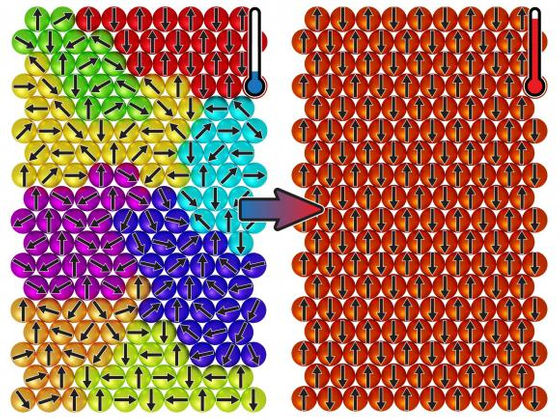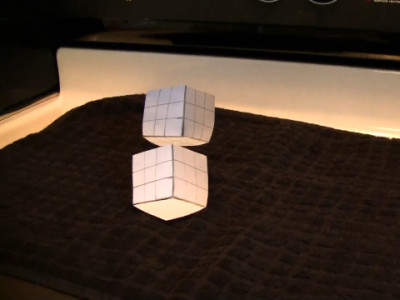Scientists are amazed at the mysterious phenomenon of 'freezing when heated'

Ice made by cooling water in the freezer melts into water when warmed. However,
Thermally induced magnetic order from glassiness in elemental neodymium | Nature Physics
https://www.nature.com/articles/s41567-022-01633-9
Magnetic spins that'freeze' when heated: nature in the wrong direction | Radboud University
https://www.ru.nl/en/research/research-news/magnetic-spins-that-freeze-when-heated-nature-in-the-wrong-direction
Physicists Are Startled by This Magnetic Material That'Freezes' When Heated
https://www.sciencealert.com/this-magnetic-material-freezes-when-heated-in-a-reversal-of-our-expectations
This time, the research team of Alexander Cajetrian, a physicist at Radboud University in the Netherlands, discovered the phenomenon that neodymium freezes when a slight amount of heat is applied. Regarding this discovery, Kagetrian said, 'The magnetic behavior of neodymium observed this time was the opposite of normal. This is a very counterintuitive phenomenon, for example, when water is heated, it becomes ice.' talked.

by
Generally, in a ferromagnet such as iron, the spins of atoms are aligned in the same direction, and the atom itself becomes a magnet with north and south poles and points in the same direction to exert magnetic force. increase. On the other hand, when copper is mixed with iron to make an alloy, the spin direction of the atoms becomes an irregular ' spin glass '.
Spin glass is named because the appearance of atomic spins in irregular directions is similar to glass, which is solid but does not crystallize and has a disjointed structure.
On the other hand, neodymium magnets , which are extremely powerful magnets, are made by adding neodymium and boron to iron, but neodymium alone does not stick to magnets. Neodymium is a simple substance, so it has a crystalline structure, but because it behaves like glass, neodymium is called self-induced spin glass .
Cajetrian and colleagues who were studying this neodymium slightly heated neodymium from minus 268 degrees to minus 265 degrees. Then, the spins of neodymium atoms solidified to form a magnet-like pattern. On the contrary, when neodymium got cold, it returned to a random pattern.
The figure below shows this phenomenon. The spin of the neodymium atom (left) before heating forms a swirling pattern, while the heated neodymium (right) freezes and forms a kind of magnet-like pattern.

It is unclear why neodymium behaves in the opposite way to normal substances, but the research team suspects that a phenomenon called ' frustration ' may be involved. Frustration means that the magnetic material cannot be in an ordered state and becomes a disordered state like spin glass. According to the research team, as the temperature of neodymium rises, the frustration force that tries to disorder the structure weakens, so it is thought that it will be possible to settle in a state where the spins are aligned.
Researchers are hoping that a new type of computer and information storage technology will be realized by unraveling the mechanism of the mysterious phenomenon that 'order is born from disorder when energy is added'.
Related Posts:
in Science, Posted by log1l_ks







